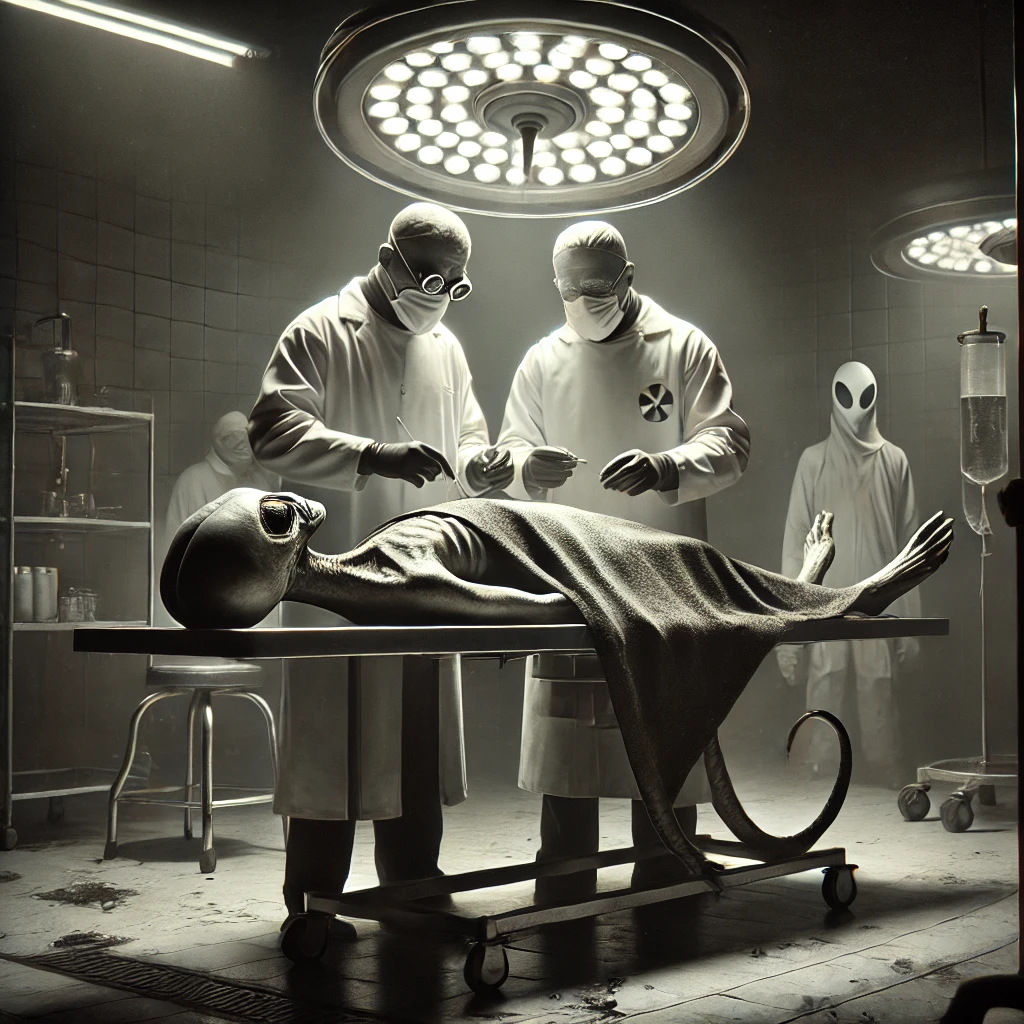Detlev Bronk

According to a former U.S. military cameraman, the alien autopsy was performed by “Dr. Detlev Wulf Bronk” (August 13, 1897 – November 17, 1975) and “Dr. Robert Parvin Williams” (1891-1967). Neither Bronk nor Williams can be whistleblowers, as they are no longer alive, but their backgrounds made them logical choices to conduct the autopsy.
Bronk was a pioneering American scientist whose work significantly advanced biophysics, leading to its recognition as a distinct discipline. He was also a dedicated educator, serving as president of both Johns Hopkins University and the National Academy of Sciences. His name appears in the controversial “Majestic 12” documents, which surfaced in the 1980s and allegedly detailed a secret government initiative investigating UFOs. As Chairman of the National Research Council and a member of advisory committees for the Army, Air Force, and Atomic Energy Commission, Bronk was deeply embedded in government science policy.
Bronk’s academic career began with a Bachelor of Science in electrical engineering from Swarthmore College in 1920, followed by a Ph.D. in 1926 from the University of Michigan. His doctoral work focused on applying physics and mathematics to physiology, setting the stage for his later contributions to biophysics. He held research and teaching positions at Swarthmore College and later the University of Pennsylvania, where he directed the Eldridge Reeves Johnson Foundation for Medical Physics. His work on neurophysiology, particularly the electrical activity of nerve fibers, was groundbreaking.
In 1948, Bronk became president of Johns Hopkins University, where he strengthened the biophysics program.
According to Ronald Garner, the Rockefeller family played a key role in advancing research into UFOs and extraterrestrial life by funding studies and influencing scientific discourse. He asserts that their involvement extended to financing research and promoting public awareness to integrate the subject into mainstream discussions. Bronk later served as president of The Rockefeller University from 1953 to 1968, overseeing its transition into a graduate research institution. His contributions to science policy extended beyond academia; he was elected president of the National Academy of Sciences in 1950 and used this platform to advocate for increased research funding and integration of scientific advancements into policy.
Throughout his career, Bronk received numerous honors, including the Presidential Medal of Freedom in 1964 and the National Medal of Science in 1968. However, some records from his career remain missing. Notably, when researcher Bob Shell sought to review Bronk’s papers from 1947, he found that all records from that year were unaccounted for, with no explanation from library staff.
Dr. Robert Parvin Williams was Special Assistant to the Surgeon General of the Army at Fort Monroe, Virginia. In 1947, he was a Lt. Col. and was later promoted to Brigadier General in 1949. His role in military medical oversight positioned him at the highest levels of classified medical operations.
Dr. Detlev Wulf Bronk and Dr. Robert Parvin Williams were likely selected for the alien autopsy due to their scientific expertise, military authority, and ability to maintain absolute secrecy. Bronk’s specialization in nerve function and the physiological effects of radiation made him an ideal candidate to analyze an extraterrestrial body with unknown biological properties. His leadership in major scientific institutions and his alleged involvement in Majestic 12 positioned him as a key figure in managing classified research related to extraterrestrial life. Williams, as Special Assistant to the Surgeon General of the Army, had oversight over critical medical operations and direct access to top-tier military medical resources. His trusted status and rising military rank ensured that any classified medical discoveries remained tightly controlled within the military hierarchy. Traditional pathologists, despite their expertise in autopsies, lacked the security clearance, interdisciplinary knowledge, and government trust required for such an operation.
Detlev Wulf Bronk’s involvement in UFO and extraterrestrial research appears directly linked to the aftermath of the Roswell incident. If the alien autopsy occurred first, Bronk’s expertise in biophysics and nerve function would have positioned him as a key scientist in analyzing the recovered entities. His subsequent selection for the Majestic 12 committee would have been a logical step, ensuring that someone with firsthand knowledge of extraterrestrial biology played a role in shaping the government’s response. Dr. Robert Parvin Williams, with his high-level military medical oversight, would have ensured security and procedural control over the examination. Their selection was based on scientific necessity, military control, and the need for absolute discretion in handling one of the most classified events in history.

